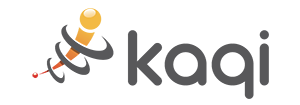

Operational consulting in transformations
and human dynamics
Why ?
It is widely said that 70% of transformation projects fail. Our experience has convinced us that, mostly, these failures are not (only) due to technological or financial difficulties, but to the inadequate attention to human factors : emotions (positive and negative), personal and collective interests, synergies and conflicts of egos, hidden agendas and accepted stakes… Interrogations and rational calls into questions too, and also needs to be committed, involved, to contribute…
In a word, all what is usually described as “resistance to change”, which is in fact related to the ability to get the buy-in of many skills and energies.
How ?
We provide you our expertise about transformations, by taking into account the human and organisational aspects, and by choosing the buy-in, the mobilization, the commitment.
We help you so to design, implement and manage dynamics made of mobilization, collaboration and productivity.
Ideally, we intervene before the implementation of your project, in order to help you to design a dynamic for mobilization, involvement and implementation. But often, you call us when you are struggling with a real “situation”, and you don’t want to stay alone.
Our contribution
- Identifying the human obstacles and levers for your project;
- Proposing you operational ways, in order to calm down the conflicts, to facilitate the emergence of real synergies, and the buy-in of shared objectives, declined into very real commitments, for a quick and perennial implementation;
- Going along with you and your teams, on specific actions just to “boost” them, or for a more long term, to facilitate the ability to make decisions and implement these.
Cases
Welcome to the matrix !
Modern organizations are made of matrixes (and sometimes even less structured than matrixes…). They call into question the perceptions and practices related to the traditional “leadership” – which many mistake with “power”, or also “authority”.
These perceptions are devastating for companies and teams, when everyone tries to « win against » the other.
Some reject the “operational ones”, who lose to much energy with their bad habits, the others disparage the “functionals” who are, always, so “far from the ground”. And sometimes the matrixes have at least three dimensions (with the shareholders, the partners or other transverse functions, superimposed on operational and functional dimensions). And that inevitably lead to a complex system, unpredictable and unverifiable by nature when you consider it with dogmatism.
Our contribution: to make the contributions of each one converge, in order to design dynamic adapted at the same time to the constraints, opportunities, and the resources (human, financial, material…) ; and help you to adopt agile postures, adaptive operations, and ad hoc organizations.
Implementing procedures
When you’re in charge of a staff whose mission is to work out a “standard” (financial, legal, technical…), the temptation may be strong to seek for the “power to enforce”. And, when resistances appear, to look always for more constraints – always higher, always stronger… and often in vain.
In alternative to the temptation of “the expert” who holds “the solution” – with the risk that it remains theoretical, in an ivory tower -, we prefer to design and support implementation dynamics: procedures created in a collaborative way between experts and operators, guaranteeing the buy-in of the goals and objectives. And, so, an implementation of rules adapted to the stakes and means, realistic, effective and perennial.
Operating or maintening ?
So obvious as it can be, we rarely consider that, when one uses a machine, it worsens, and requires a maintenance, often expensive. And also that when this machine is maintained, it doesn’t produce, and thus becomes expensive, or at least, non-contributive… This evident truth is however at the centre of the constraints of many companies, industrial or of service (because what is true for the material resources is also for human resources).
And when a firm monitors its activity through ten process, one can easily imagine the multiplicity of “interactions” between those, and their “owners”.
Our contribution: to identify the sources of tension and to propose, on the field, methods of facilitation between the interfaces, the “processes” and the teams in charge of their implementation.
Cases in videos


